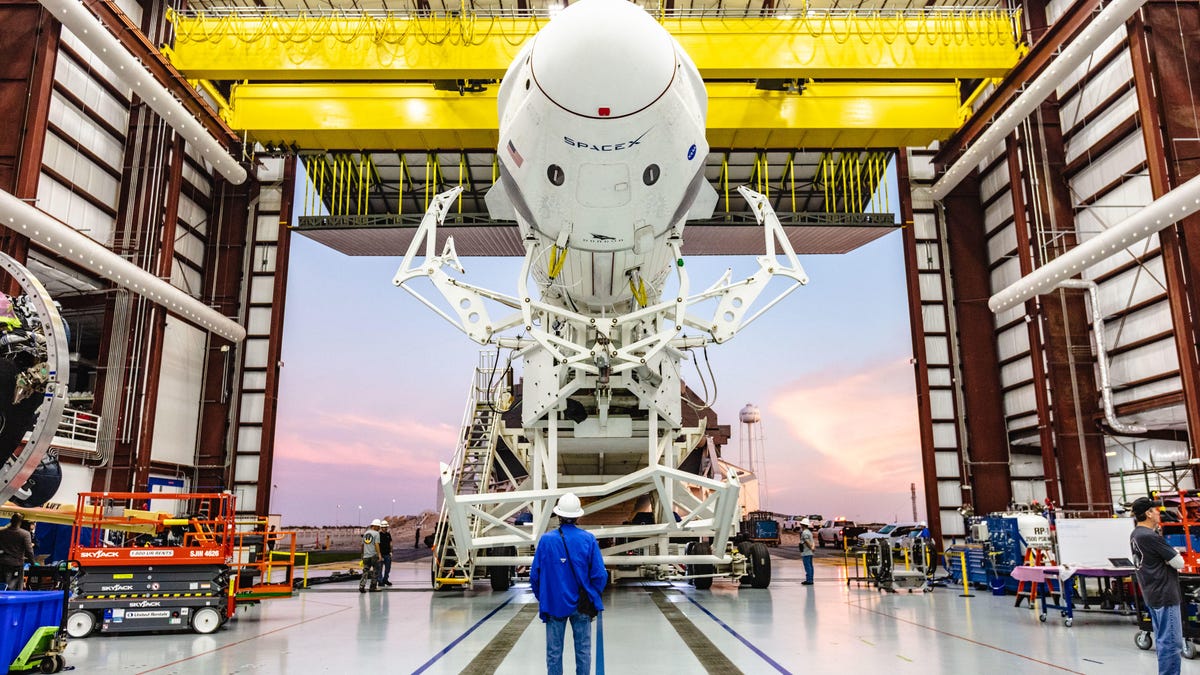NASA, SpaceX and Boeing’s ISS program is as American as moon pie
NASA wants to get astronauts to the space station from American soil again. Elon Musk's pet project and a century-old company are here to help.

It almost sounds like the start of a joke: NASA walks into a bar with one of the oldest aerospace companies and a guy who smoked pot with Joe Rogan…
But while they may sound like unlikely bedfellows, NASA has formed partnerships with Boeing and SpaceX in a bid to get into space faster and to once again launch astronauts from US soil. It's known as the Commercial Crew Program, and it's been set up to help NASA get astronauts to the International Space Station (without spending too many taxpayer dollars).
In this week's episode of Watch This Space, we take a look at what these two giants of American industry bring to the table and what NASA has to gain from outsourcing its space program. Let's break it down.
What is the Commercial Crew Program?
The CCP is what's known as a public-private partnership -- it's a common way for government agencies to use expertise in private industry to get their projects completed on time and on budget. In 2014, NASA selected Boeing and SpaceX, two of the biggest names in the American aerospace industry, to help it get astronauts into space and onto the International Space Station.
The idea is that Boeing and SpaceX will help NASA develop and operate the launch systems and spacecraft to get humans into low-Earth orbit and help it fulfill its obligations to help staff the ISS. Since NASA's shuttle program wrapped in 2011, the US has been relying on other countries to get its astronauts into space, launching in the Russian-made Soyuz spacecraft as far away as in Kazakhstan. NASA wants to bring those launches back home.
NASA's Commercial Crew Astronauts with the Boeing CST-100 and SpaceX Dragon mockups in 2018.
Why Boeing and SpaceX?
While they both focus on the sky, these companies couldn't be more different. Boeing has been around for more than 100 years and has worked with NASA pretty since its formation in the '60s, including working on the Apollo program. SpaceX, by contrast, has been around for less than two decades, with ambitious goals to get humans to Mars, make spaceflight more affordable and even take tourists to the moon.
But both companies are at the cutting edge of aerospace technology and have in-house expertise in developing, manufacturing and launching spacecraft. It's this skillset that NASA wants to use to help it get into space faster without having the kind of cost blowouts that caused problems in the past.
The SpaceX Crew Dragon capsule ahead of a test flight that was later delayed.
How will they get there?
To get astronauts into space, Boeing has developed the Crew Space Transportation (CST)-100 Starliner. According to Boeing, the Starliner can fit up to seven passengers, or up to four crew for missions to the ISS, alongside research cargo. It's a reusable aircraft that can be used up to 10 times. It can land on solid ground rather than landing in the ocean (which is a first for an American-made spacecraft). And there are backup controls inside for the pilot.
SpaceX, on the other hand, is using its Dragon spacecraft. SpaceX has been using the Dragon to run cargo to the ISS since 2012. (It made history as the first commercial spacecraft to visit the space station.) But the Dragon is also configurable to carry crew in its capsule section, with onboard controls, an Environmental Control and Life Support System and an emergency escape system that carries astronauts to safety with "about the same G-forces as a ride at Disneyland." Because this is SpaceX of course.
What's the timeline?
One of Boeing's Starliner team members works on the spacecraft.
We can expect NASA astronauts to be heading to the ISS this year, but the CCP hasn't been without its problems. NASA has named its two crews for the Boeing and SpaceX spacecraft, though there were last-minute changes for the Boeing craft due to medical issues. SpaceX has also been forced to delay its test flights a number of times.
But according to the most recently updated schedule and if all goes as planned, both SpaceX and Boeing should complete test flights by March and abort tests (to ensure systems are safe if the launch needs to be aborted on the pad or mid-ascent) before running crewed flights mid-year. The estimate is June for SpaceX and August for Boeing.
After that, both companies will be certified to launch humans into low-Earth orbit and send crew members to the International Space Station.
To learn more about NASA's partnerships, check out the latest episode of Watch This Space.
NASA turns 60: The space agency has taken humanity farther than anyone else, and it has plans to go further.
Taking It to Extremes: Mix insane situations -- erupting volcanoes, nuclear meltdowns, 30-foot waves -- with everyday tech. Here's what happens.

